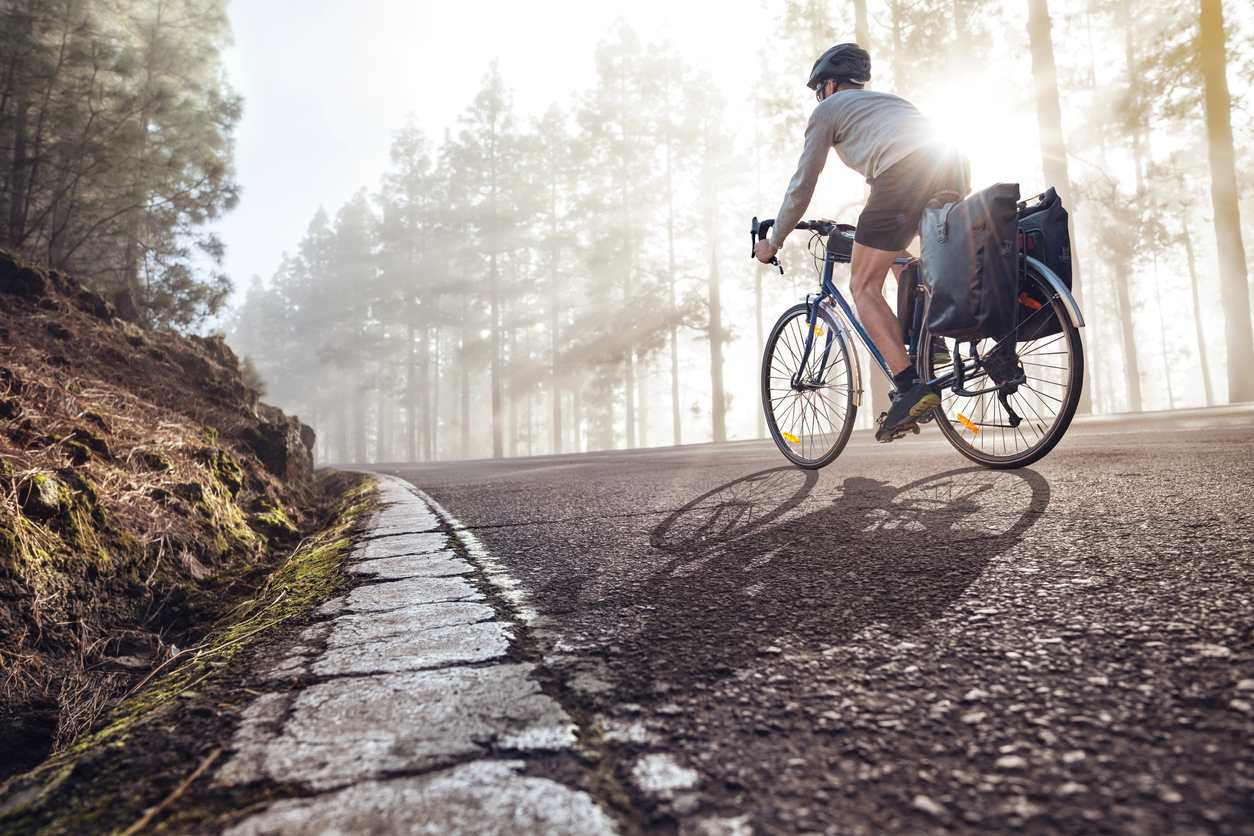If you’re looking for a new challenge bikepacking may satisfy that yearning. Similar to bike touring, this off-road experience is a mixed- terrain cycling adventure, with the freedom to include backcountry trips. Here’s how to get started exploring anywhere on two wheels.
CHOOSE THE RIGHT BIKE
One of the best recommendations for beginners is to choose a hardtail bike. The front suspension on hardtails makes them comfortable to ride on smoother trails and they’re generally affordably priced. Or try a rigid mountain bike to get the most energy efficiency out of each pedal stroke. There’s a bike that suits everyone. With an aluminum or steel mountain bike, there are many options: the frame can generally accommodate more types of cargo space, so it’s easier to mount bags.
Mountain bikes also come with more stability and control. Experienced cyclists may consider drop-bar gravel bikes, which allow you to ride over many different surfaces including dirt roads, forest tracks, gravel trails and sidewalks They’re also faster, so you can cover more distance.
GEAR UP
Any equipment and essentials you take should be well secured to your bike frame, seat post and handlebars using racks, mounts, straps or ties. For what to bring on your trip, see below.
Start with a short trip and build your gear collection as you figure out what you need. Consider borrowing equipment for your first trip before investing in your own. If you know what you want and your local bike shop doesn’t sell it, they may be able to help with special orders. AMA members can also enjoy exclusive pricing and rewards on bike gear at AMA Rewards. AMA members can also receive free fenders and a bike bell at Pedego Canada. They can also get up to 15% off on Pedego Canada bike rentals in Edmonton, Calgary, Jasper, or Canmore.
If you’ve been camping or backpacking before, you can likely use some of your lightweight gear, like sleeping bags and cooking items.
MORE TO READ
Check out some DIY bike tune up tips.
REPAIRS ON THE GO
Be prepared to fix your bike anywhere. Carry a repair kit and a couple of tire levers to fix a flat. We recommend a functional multi-tool with a chain breaker and a set of Allen keys that will fit every bolt on your bike. A multi-tool with small pliers and a sharp knife is also valuable. Keep extra nuts and bolts in a sealed bag along with a couple of chain links in case they come loose.
GRAB A MAP
Plot your route in advance and have a map or GPS handy while riding. Short local trips will help you determine what items are absolutely necessary for longer journeys.
Your local bike shop likely has a staff member with bikepacking experience to share, as well as route suggestions and tips. When bikepacking, you can map your own exciting adventure.
WE GOT YOU COVERED
With AMA Bike Assist you can use any of your annual service calls to get help if your bicycle breaks down while you’re riding. We’ll deliver air for flats, adjust chains and tighten loose handlebars. If we can’t fix it on the spot, we’ll transport your bike back home or to a repair shop.
